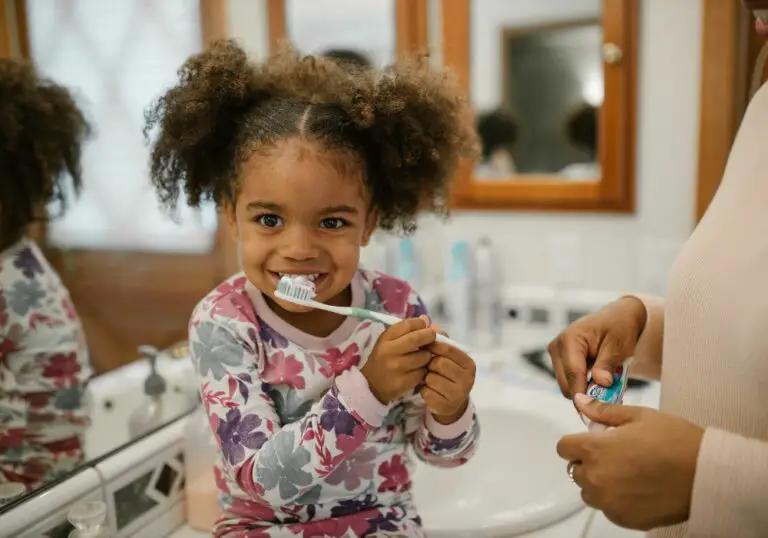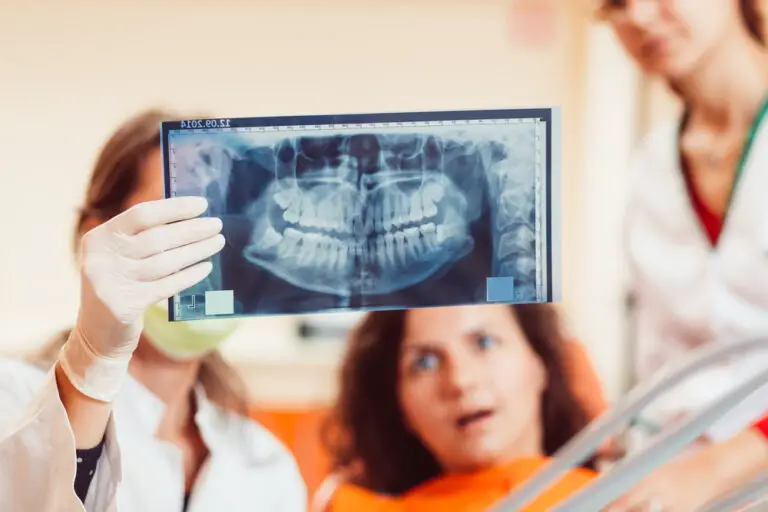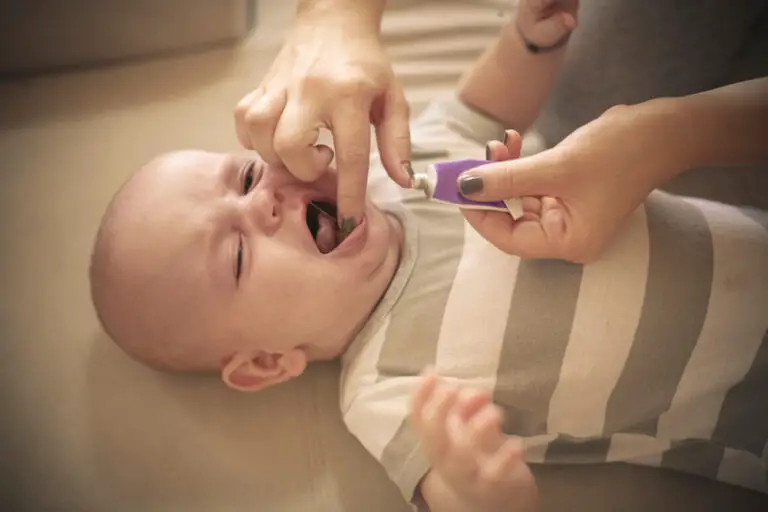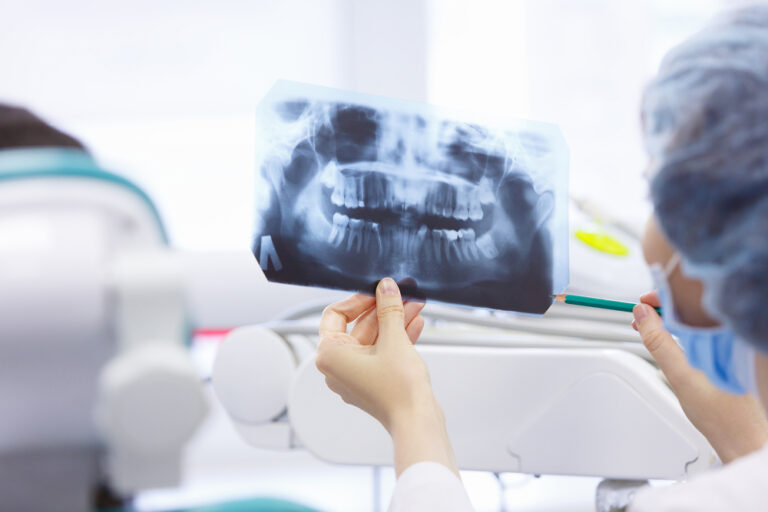Why flossing baby teeth is important
Flossing is an essential part of dental care, even for babies and toddlers. Here are some key reasons why flossing baby teeth matters:
Prevents tooth decay between teeth
Tooth decay can occur in the tiny spaces between teeth where brushing can’t reach. Food and plaque gets trapped in these crevices and causes damage if not removed. Flossing gets rid of debris and helps prevent cavities from forming in these vulnerable spots.
Cavities are caused by acids in plaque eating away at the enamel surface of teeth. Plaque is a sticky film of bacteria and food particles. It forms naturally on teeth every day but is removed by brushing and flossing. When plaque remains stuck between teeth, the bacteria continue multiplying and produce acids that erode tooth enamel, creating holes and tooth decay.
Brushing only cleans 60% of your child’s tooth surfaces. The tight space between teeth is a prime target for plaque to accumulate and eventually decay the teeth. The bristles of a toothbrush simply can’t fit into these narrow gaps. Regular flossing is the only way to clean away plaque hiding deeply between teeth and protect the surface enamel.
Once a cavity forms, it continues eroding deeper over time. This can lead to severe tooth damage, abscesses, infection and tooth loss if decay is left untreated. Cavities are painful and require much more extensive dental work to fix than prevention would have taken. Flossing to remove plaque before it can create cavities saves your child from considerable dental issues down the road.
Establishes good oral health habits early
Starting dental care like flossing early helps your child get used to these healthy habits. This makes it more likely they will continue caring for their teeth properly as they grow up.
Childhood is the time to mold good dental hygiene routines that will benefit your child throughout their life. Flossing daily removes plaque before it leads to problems like tooth decay and gum disease. Getting children used to a thorough flossing habit makes it more ingrained as a habitual part of their oral care.
Studies show that people who establish flossing at a young age floss more consistently as adults. The range of motion needed to floss back teeth can be difficult to pick up later in life if not learned and practiced during childhood.
Setting your toddler up with positive flossing experiences helps the habit stick long-term. Allowing plaque to go unchecked now makes it more likely your child will develop unhealthy dental habits that continue into adulthood. Instilling thorough flossing and tooth brushing early is an investment in your child’s lifelong oral health.
Allows teeth to erupt properly
When teeth are coming in they need space to erupt into the proper position. Trapped food can block this, while flossing clears the way for straight, healthy teeth alignment.
Your child’s 20 baby teeth start pushing up through the gums around 6 months old. The two front bottom teeth usually come first, followed by the four upper front teeth. The back molars erupt between 12-18 months old.
New teeth take their time moving into place in an orderly fashion. Each tooth buds up in the jaw bone and slowly migrates into its destined spot in the mouth. But food particles and plaque easily wedge into the gaps between erupting teeth. This debris can physically block proper teeth alignment and cause overlapping and crowding issues.
Flossing is the best way to dislodge plaque, tartar and food bits from between teeth and allow correct teeth positioning. Keeping eruption paths clear through regular flossing helps incoming teeth line up without obstruction. This promotes straight, properly spaced teeth and avoids misalignment that requires orthodontic work later on.
Freshens breath
Like tooth brushing, flossing scrapes away stinky bacteria that contribute to bad breath. Your toddler’s smile will be sweeter when their teeth are flossed.
Bacteria rapidly multiply in the mouth and feast on food debris stuck between teeth and in gum crevices. As they metabolize (digest) these food particles, smelly waste products are produced. These volatile sulfur compounds create unpleasant odors.
Without flossing to remove the bacteria and food they thrive on, smelly compounds accumulate and make breath unpleasant. The bacteria between teeth are the primary culprit for bad breath. Flossing removes them right from the source, leaving your child’s mouth cleaner and breath fresher.
Keeps gums healthy
Floss massages and cleans the gums, increasing blood circulation. This prevents gum diseases like gingivitis. Healthy gums are important as they anchor the teeth.
The gums play a vital role holding the teeth firmly in place via the periodontal ligaments. When gums become irritated and inflamed, they can pull away from the teeth. This leaves teeth loose and unstable, risking damage or even tooth loss.
Gingivitis is early gum infection causing red, puffy, bleeding gums. The plaque that leads to gingivitis forms just along the gumline and between teeth where only floss reaches. Brushing won’t access plaque irritating the gums like floss will.
Flossing sweeps away the attacking bacteria right next to the gums. It also massages the gums, stimulating blood flow to keep tissues healthy. Diligent flossing prevents gingivitis and ensures stable, sturdy gums to support the teeth.
When to start flossing baby teeth
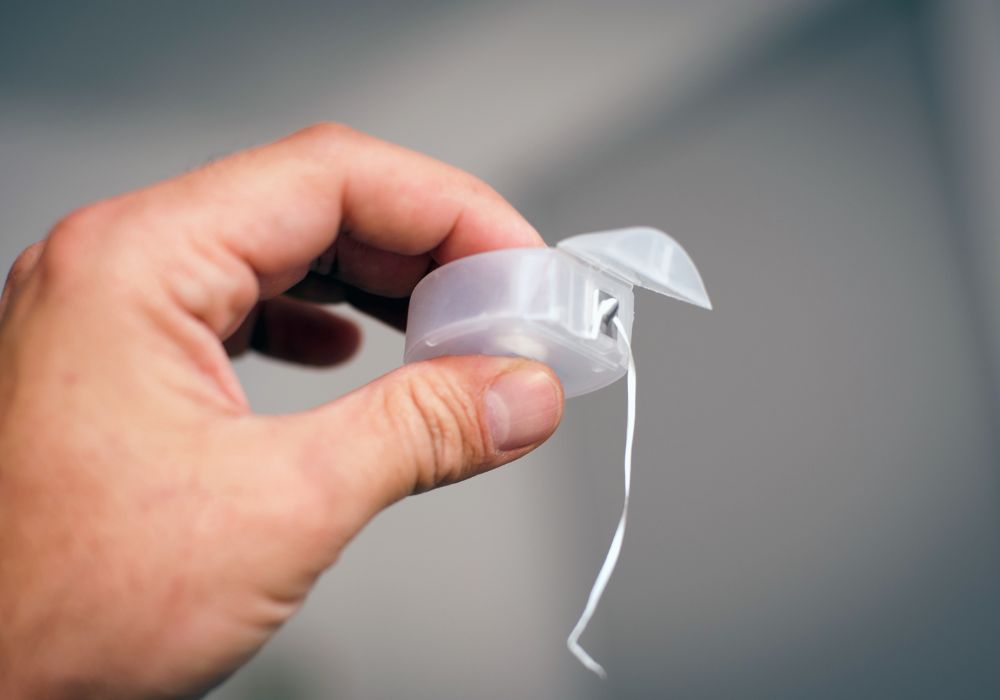
The American Dental Association and American Academy of Pediatric Dentistry recommend starting flossing as soon as teeth begin to touch each other, around 18 to 24 months. However, check with your pediatric dentist as some children’s teeth may erupt and touch earlier than this timeframe.
Signs it’s time to floss:
- Front teeth are contacting each other when biting down
- Back molars have erupted fully
- No longer wide spacing between teeth
- Your dentist recommends beginning flossing
Don’t wait until all baby teeth are present. Start flossing as soon as the first touching teeth emerge to remove plaque and prevent issues.
The average age that a child’s teeth begin contacting is 18-24 months, but it may be a few months sooner or later depending on the child. Contact your pediatric dentist to evaluate your specific child’s teeth eruption and advisement on when to initiate flossing. The first pair of teeth to touch are usually the lower front incisors. Even if no other teeth are touching yet, floss between these first contacting teeth.
Watch for teeth beginning to meet vertically when biting down. For back teeth, ensure the molars have fully emerged from the gums before flossing between them. If teeth still have wide spacing between them, flossing is not imperative yet but can still be done occasionally for practice.
Don’t take a “wait and see” approach, as decay and plaque can start accumulating as soon as adjacent surfaces touch. Begin flossing proactively as the first teeth come together to prevent oral health issues from developing.Consistency is key—make flossing between contacting teeth part of your child’s daily oral hygiene.
How to floss your toddler’s teeth
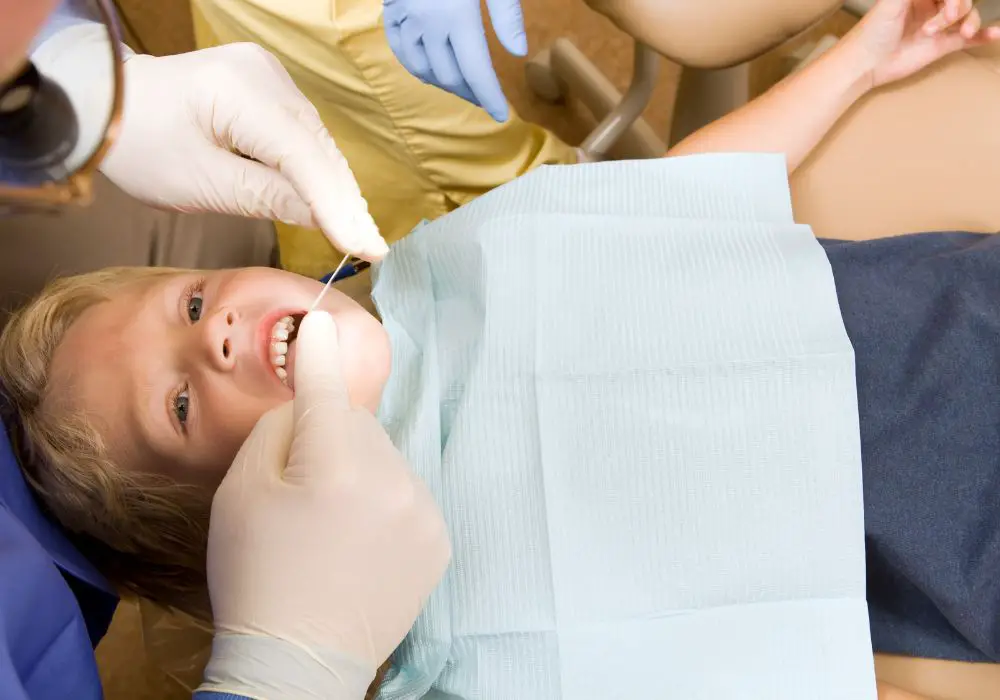
Flossing a squirming toddler can be challenging. Follow these tips for success:
Use floss picks
Floss picks or flossers with handles are easier for little hands and mouths to manage than traditional floss. The pick shape also makes it simpler to maneuver between tight teeth. Choose child-sized flossers with soft, flexible picks if possible.
Floss picks offer better control and easier access for flossing back teeth compared to regular floss. The plastic handle gives your toddler something substantial to grip. Look for flosser brands like Platypus and Dr. Fresh specifically designed for children, with softer picks that won’t scratch delicate mouth tissue.
Many floss picks come with fluoride-coated floss to help strengthen tooth enamel. The pick tip allows you to isolate and floss each tooth gap more easily. Have your child try holding their own flosser and guiding them to do it themselves with your supervision.
Try flossing toys
Special flossing toys feature a floss string stretched between two plastic handles shaped like animals or characters. Your child can more easily grip these while you floss their teeth. Make it fun by letting them hold their favorite flossing toy.
Flossing toys transform flossing from a chore into a playtime activity. Fun designs like flossing spiders, dinosaurs and rocket ships engage your toddler. The easy-to-hold handles help control the floss string while you do the flossing motions.
Let your child watch themselves floss in the mirror while holding their toy flosser. The sense of participation can make them feel like a big kid practicing good oral hygiene. Switching between different shaped flossers keeps it interesting too.
Floss one tooth at a time
Don’t try to floss the whole mouth at once. Gently lift the floss between two contacting teeth, floss up and down, then move to the next pair of teeth. Work slowly and patiently, even if you only fully floss a few teeth at a session initially.
It’s easy to get overwhelmed trying to thoroughly floss every tooth right away. Break it down into manageable steps, especially for toddlers with short attention spans. Devote several minutes per flossing session to clean between a subset of teeth.
Be methodical, moving from one tooth gap to the adjacent gap, one small section at a time. Use fresh floss as needed if it becomes shredded or dirty. Over multiple sessions, you can work your way through the whole mouth until flossing all spaces becomes quicker and easier.
Use a lap hold
Sit your toddler on your lap facing away from you. Gently hold their head steady with one arm while you floss with the other hand. This gives you access and control while keeping them comforted and secure.
The close control of a lap hold makes flossing toddler teeth doable. Sit them on your thigh so you can easily reach around their face. Use your elbow to gently brace against their shoulder and immobilize their head. This prevents sudden jerky movements that could cause a flossing injury.
Work section by section, releasing your hold as needed to give your child frequent breaks. Offer hugs and cuddles between flossing bursts to keep them relaxed and cooperative. A soothing tone of voice and lots of praise helps too.
Make it routine
Consistency is key. Set aside a few minutes after tooth brushing at bedtime or in the morning to floss. This helps it become an expected habit. You can even sing a little flossing song!
Like brushing, flossing goes best when incorporated into a consistent daily schedule. It signals a transition time in your toddler’s routine when they anticipate sitting to have their teeth flossed.morning and evening flossing sessions, like before or after brushing teeth, make it an intuitive part of their hygiene ritual.
Keep flossing time low-stress and fun by singing toddler songs or telling stories. For kids who associate flossing with getting a reward, keep some special stickers or treats on hand. Make a point to praise them for being good “little flossers” too!
Try different floss types
If regular floss is too difficult, consider dental tape which is wider and flatter or soft “shoe lace” floss. There are many floss varieties to find the best fit for your tot’s teeth.
The thinness of regular floss makes wresting it between tight toddler teeth difficult. Dental tape is wider, flatter and more rigid. Gentle shoe lace floss doesn’t shred when kids clench their teeth.
Test different flosses to discover which type your child tolerates best. Buy floss with appealing colors or flavors like mint or strawberry to make the experience more fun. Introduce a new floss periodically to keep them interested in flossing.
Praise success
Show excitement when they let you floss without resistance. Sticker rewards are great too. This positive reinforcement makes flossing easier.
Kids crave attention and approval from parents. Praise them for sitting still, letting you open their mouth, not resisting the flossing motions, etc. Clap and cheer when they get through an entire flossing session without complaint!
Small sticker sheet rewards allow your toddler to proudly display their flossing success. Mark a calendar with stickers each day they cooperate. Acknowledge when they seem proud of themselves for accomplishing the flossing routine too.
With the right preparation, technique and patience, flossing your 18 month old’s teeth is an achievable goal. Set your toddler up now with good oral hygiene habits that will benefit their smile for years to come!
Common flossing problems and solutions
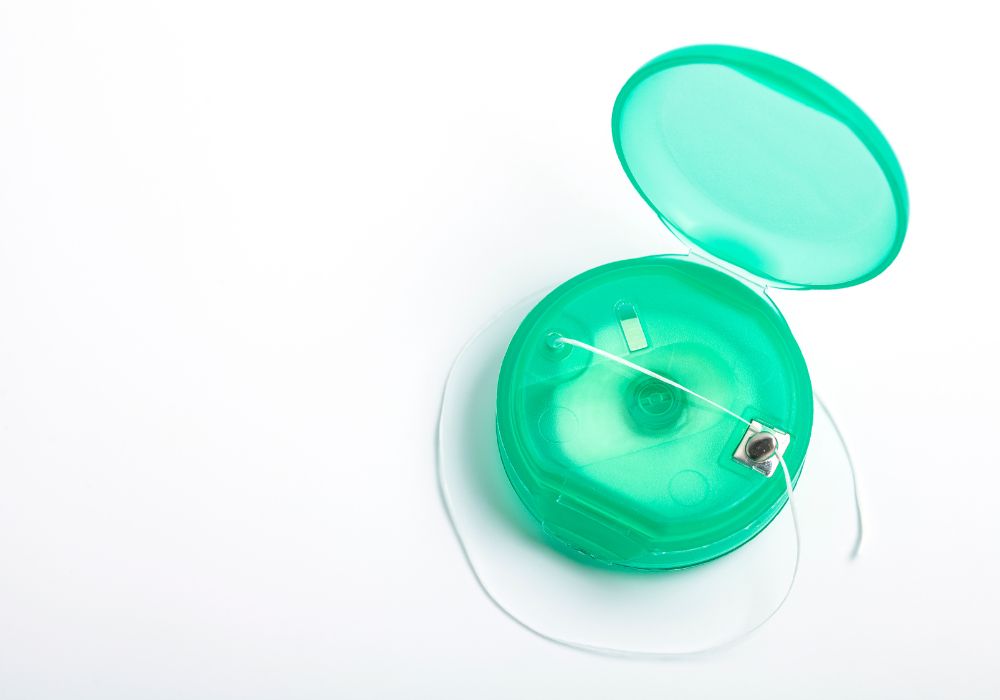
Flossing a reluctant toddler can be frustrating. Here are troubleshooting tips for common flossing issues:
| Problem | Solution |
|---|---|
| Clamping mouth shut | Use a favorite toy or book as a distraction. Have a parent gently hold the mouth open. Go slowly with patience. |
| Turning away | Make it a playful game, taking turns holding the floss. Use praise and stickers as rewards. |
| Biting the floss | Try a bite-resistant flosser or dental tape. Use light tension to avoid stimulating biting. |
| Gagging | Use little pressure and go slowly. Give them control holding the flosser. Try another time when calmer. |
| Crying and screaming | Stop and take a break. Comfort them and try again later. It may take time for them to accept flossing. |
| Moving tongue in the way | Gently press tongue aside with a finger or mouth prop. Use a wider dental tape if tongue obstructs string floss. |
| Stubborn food stuck between teeth | Don’t forcefully jam floss, which can damage gums. Try rinsing with water. Ask your dentist to remove if needed. |
Overcoming oral aversion takes patience and finding the right approach for your particular child. Stay positive through the challenges – it will get easier with time! Praise every small victory and keep flossing sessions brief and pleasant.
Frequently Asked Questions
Is flossing necessary for baby teeth that will fall out?
Yes, flossing baby teeth is critical. Cavities and gum disease can impact both baby and permanent teeth. Unhealthy baby teeth also don’t space properly for adult teeth coming in.
Though baby teeth are temporary, keeping them healthy is vital. Tooth decay in baby teeth increases risk of permanent teeth developing decay. Gum disease can damage the emerging permanent teeth still under the gums. Poorly positioned baby teeth cause crowding and misalignment issues for incoming adult teeth.
Even if they eventually fall out, primary teeth deserve the same diligent brushing and flossing as permanent teeth. Practicing oral hygiene with baby teeth makes kids more accustomed to keep caring for their teeth when the adult set grows in. Don’t wait – flossing baby teeth now prevents problems later.
Can’t I just use a washcloth on my toddler’s teeth?
Washcloths may remove some surface plaque but can’t thoroughly clean between teeth like floss. Flossing is more effective at preventing cavities and other oral health issues.
Cloth is too thick to fit deeply between tight teeth gaps. It mainly wipes away debris on the outer tooth surfaces. Without flossing to clear plaque from inside the crevices, bacteria continue eroding enamel which leads to decay. Dental floss is designed specifically for the precision cleaning only it can provide.
Washcloths are useful for an overall wipe-down of teeth, gums and tongue but are not a substitute for floss. Dental professionals recommend dedicated flossing for optimal oral health. Floss properly reaches harmful plaque other methods can’t.
My toddler hates having their teeth flossed. What should I do?
Make flossing fun with flossing toys, games and rewards. With positive reinforcement over time flossing can become an accepted routine. Stay patient, even doing just 1-2 teeth a session. Go at their pace.
It’s common for toddlers to resist unpleasant sensations like flossing. Avoid force, which will make them clench their teeth. Try distraction by letting them watch a video or focus on their favorite toy. Praise and give stickers for any small bits of flossing completed without a struggle.
Over multiple sessions, increase the amount flossed bit by bit as tolerated. Expect setbacks and tantrums – stay calmly persistent. Make it a team effort with parents and toddler taking turns. Let your dentist demonstrate proper technique too.
Are floss picks safe for toddlers?
Yes, floss picks with soft, flexible plastic designed for children are safe and easier to use on little teeth. Supervise use to avoid injury from the pick tip. Show them how to gently floss with the pick end.
The biggest safety issue is the child potentially jabbing the pick end into their gums, cheek or tongue. Opt for child flossers with rounded, blunt picks. Monitor your toddler and provide hand-over-hand guidance.
Pick sizes made for very young mouths have short pick tips. This reduces the risk of poking sensitive skin or eyes. Always supervise use of any flossing utensils. With time and practice, your child can learn to floss safely themselves with proper technique.
How much floss should I use for my child?
For toddlers, about an 18 inch strand of floss is sufficient to floss all of the teeth they have so far. Wind unused portion around your finger to adjust length as you move from tooth to tooth.
The amount of floss needed depends on your child’s age and how many teeth they have. For the first set of baby teeth coming in, 18 inches can floss top and bottom. This gives you enough length to wrap used sections around a finger while leaving clean floss exposed.
Unroll more floss from the spool if needed as you work around the whole mouth. Avoid reusing pieces that are dirty or frayed. Always use a fresh section between each tooth so plaque isn’t spread around.
Flossing baby teeth is an essential habit for instilling lifetime oral health. While presenting unique challenges, with consistent effort and patience it is possible to regularly floss even the trickiest toddler’s teeth. Maintain a calm, positive approach, trying various flossing techniques and rewards. Your diligence will help their teeth stay happy and healthy.

